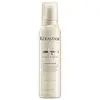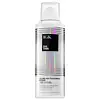What's inside
What's inside
 Key Ingredients
Key Ingredients

 Benefits
Benefits

 Concerns
Concerns

 Ingredients Side-by-side
Ingredients Side-by-side

Water
Skin ConditioningIsobutane
Propylene Glycol
HumectantPolyquaternium-4
Butane
Propane
PEG-40 Hydrogenated Castor Oil
EmulsifyingPhenoxyethanol
PreservativeLaureth-4
EmulsifyingCaprylyl Glycol
EmollientCalcium Pantothenate
Ethylhexyl Methoxycinnamate
UV AbsorberSafflower Glucoside
Arginine
MaskingGlutamic Acid
HumectantCetrimonium Chloride
AntimicrobialSerine
MaskingHexyl Cinnamal
PerfumingHydroxypropyltrimonium Hydrolyzed Wheat Protein
Skin ConditioningLinalool
PerfumingCitronellol
PerfumingAlpha-Isomethyl Ionone
PerfumingSodium Hyaluronate
Humectant2-Oleamido-1,3-Octadecanediol
Skin ConditioningGeraniol
PerfumingParfum
MaskingWater, Isobutane, Propylene Glycol, Polyquaternium-4, Butane, Propane, PEG-40 Hydrogenated Castor Oil, Phenoxyethanol, Laureth-4, Caprylyl Glycol, Calcium Pantothenate, Ethylhexyl Methoxycinnamate, Safflower Glucoside, Arginine, Glutamic Acid, Cetrimonium Chloride, Serine, Hexyl Cinnamal, Hydroxypropyltrimonium Hydrolyzed Wheat Protein, Linalool, Citronellol, Alpha-Isomethyl Ionone, Sodium Hyaluronate, 2-Oleamido-1,3-Octadecanediol, Geraniol, Parfum
Water
Skin ConditioningVp/Va Copolymer
Isobutane
Propane
PEG-25 Hydrogenated Castor Oil
EmulsifyingPvp
Emulsion StabilisingPropanediol
SolventDipropylene Glycol
HumectantEriophorum Spissum Flower/Stem Extract
Skin ConditioningSerenoa Serrulata Fruit Extract
Skin ConditioningPanthenol
Skin ConditioningHelianthus Annuus Seed Extract
Skin ConditioningHydrolyzed Quinoa
Skin ConditioningGlycerin
HumectantLaureth-4
EmulsifyingOleth-20
CleansingPEG-40 Hydrogenated Castor Oil
EmulsifyingPhenoxyethanol
PreservativePolysilicone-29
PEG-12 Dimethicone
Skin ConditioningEthylhexylglycerin
Skin ConditioningBenzophenone-4
UV AbsorberDisodium EDTA
Glycolic Acid
BufferingSodium Hydroxide
BufferingButylene Glycol
HumectantBHT
AntioxidantTocopherol
AntioxidantBenzyl Alcohol
PerfumingPotassium Sorbate
PreservativeSodium Benzoate
MaskingSorbic Acid
PreservativeParfum
MaskingLimonene
PerfumingBenzyl Salicylate
PerfumingLinalool
PerfumingGeraniol
PerfumingCoumarin
PerfumingWater, Vp/Va Copolymer, Isobutane, Propane, PEG-25 Hydrogenated Castor Oil, Pvp, Propanediol, Dipropylene Glycol, Eriophorum Spissum Flower/Stem Extract, Serenoa Serrulata Fruit Extract, Panthenol, Helianthus Annuus Seed Extract, Hydrolyzed Quinoa, Glycerin, Laureth-4, Oleth-20, PEG-40 Hydrogenated Castor Oil, Phenoxyethanol, Polysilicone-29, PEG-12 Dimethicone, Ethylhexylglycerin, Benzophenone-4, Disodium EDTA, Glycolic Acid, Sodium Hydroxide, Butylene Glycol, BHT, Tocopherol, Benzyl Alcohol, Potassium Sorbate, Sodium Benzoate, Sorbic Acid, Parfum, Limonene, Benzyl Salicylate, Linalool, Geraniol, Coumarin
Ingredients Explained
These ingredients are found in both products.
Ingredients higher up in an ingredient list are typically present in a larger amount.
Geraniol is used to add fragrance/parfum to a product. It is the main component of citronellol. It is a monoterpenoid and an alcohol.
Monoterpenes are naturally found in many parts of different plants.
Geraniol can be found in many essential oils including Rose Oil and Citronella Oil. The scent of Geraniol is often described as "rose-like". Many foods also contain Geraniol for fruit flavoring.
Geraniol can irritate the skin when exposed to air. However, irritation depends on the ability of geraniol to penetrate into the skin. In general, geraniol is not able to penetrate skin easily.
Geraniol is colorless and has low water-solubility. However, it is soluble in common organic solvents.
Like citronellol, it is a natural insect repellent.
2,6-Octadien-1-ol, 3,7-dimethyl-, (2E)-
Learn more about GeraniolWe don't have a description for Isobutane yet.
Laureth-4 is created by reacting ethylene oxide with Lauryl Alcohol. It is a surfactant and emulsifier.
Surfactants reduce the surface tension of ingredients so they can mix better. Emulsifiers prevent ingredients such as oil and water from separating.
Linalool is a fragrance and helps add scent to products. It's derived from common plants such as cinnamon, mint, citrus, and lavender.
Like Limonene, this ingredient oxidizes when exposed to air. Oxidized linalool can cause allergies and skin sensitivity.
This ingredient has a scent that is floral, spicy tropical, and citrus-like.
Learn more about LinaloolParfum is a catch-all term for an ingredient or more that is used to give a scent to products.
Also called "fragrance", this ingredient can be a blend of hundreds of chemicals or plant oils. This means every product with "fragrance" or "parfum" in the ingredients list is a different mixture.
For instance, Habanolide is a proprietary trade name for a specific aroma chemical. When used as a fragrance ingredient in cosmetics, most aroma chemicals fall under the broad labeling category of “FRAGRANCE” or “PARFUM” according to EU and US regulations.
The term 'parfum' or 'fragrance' is not regulated in many countries. In many cases, it is up to the brand to define this term.
For instance, many brands choose to label themselves as "fragrance-free" because they are not using synthetic fragrances. However, their products may still contain ingredients such as essential oils that are considered a fragrance by INCI standards.
One example is Calendula flower extract. Calendula is an essential oil that still imparts a scent or 'fragrance'.
Depending on the blend, the ingredients in the mixture can cause allergies and sensitivities on the skin. Some ingredients that are known EU allergens include linalool and citronellol.
Parfum can also be used to mask or cover an unpleasant scent.
The bottom line is: not all fragrances/parfum/ingredients are created equally. If you are worried about fragrances, we recommend taking a closer look at an ingredient. And of course, we always recommend speaking with a professional.
Learn more about ParfumPeg-40 Hydrogenated Castor Oil is derived from castor oil and polyethylene glycol (PEG). It is used as a emollient and emulsifier.
As an emulsifier, it helps prevent ingredients from separating. It also helps make the other ingredients more soluble; it is often used to solubilize fragrances. This increases spreadability and elongates shelf life in a product.
Emollients help soothe and soften the skin. They do this by creating a protective film on your skin. This barrier helps trap moisture and keeps your skin hydrated. Emollients may be effective at treating dry or itchy skin.
This ingredient may or may not be vegan, depending on the source.
Peg-40 Hydrogenated Castor Oil may not be fungal-acne safe. We recommend speaking with a professional if you have any questions or concerns.
Learn more about PEG-40 Hydrogenated Castor OilPhenoxyethanol is a preservative that has germicide, antimicrobial, and aromatic properties. Studies show that phenoxyethanol can prevent microbial growth. By itself, it has a scent that is similar to that of a rose.
It's often used in formulations along with Caprylyl Glycol to preserve the shelf life of products.
Propane is a gas derived from petroleum and natural gas. It is used as a propellant.
This ingredient is most commonly used in shaving cream, hair products, and makeup.
Water. It's the most common cosmetic ingredient of all. You'll usually see it at the top of ingredient lists, meaning that it makes up the largest part of the product.
So why is it so popular? Water most often acts as a solvent - this means that it helps dissolve other ingredients into the formulation.
You'll also recognize water as that liquid we all need to stay alive. If you see this, drink a glass of water. Stay hydrated!
Learn more about Water